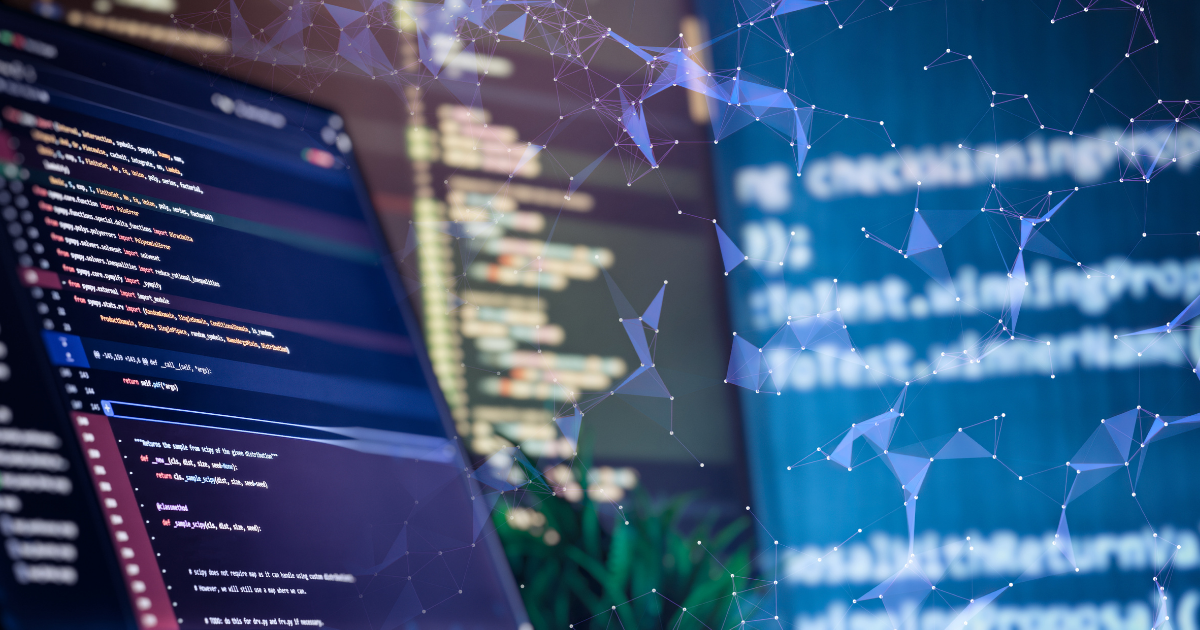AI Code Risks and the Dependency Trap
Artificial intelligence is rewriting the rules of software development. Tools like GitHub Copilot and Amazon CodeWhisperer can generate working code in seconds, making them seem like the future of faster, smarter programming. It sounds too good to be true: code generated in seconds, projects accelerated, and productivity multiplied. And it is. As organisations rush to integrate generative AI for code, many are discovering that speed comes at a price. Beneath the promise lies a set of hidden challenges.
Over-reliance on AI code builders can introduce hidden vulnerabilities, create long-term technical debt, and expose businesses to security and compliance risks. From insecure dependencies to long-term skill erosion, the trade-offs can be costly. Let’s explore the real risks of AI code builders and how they compare with the stability and precision of bespoke software development.
The Risks Hidden in AI Generated Code
AI-generated code promises efficiency, but it is not without flaws. These systems learn from vast datasets that often include open-source projects riddled with legacy bugs and outdated practices. As a result, generative AI coding can replicate these problems at scale, embedding them deep within your application’s core.
AI code vulnerabilities arise when models generate logic that appears syntactically correct but lacks contextual awareness. The result? Insecure dependencies, improper authentication handling, and vulnerabilities in code that automated tools might miss. Without a rigorous AI code review process, businesses may unknowingly ship insecure products.
Colette Wyatt, CEO of Evolved Ideas, explains: “Many companies assume AI will automatically improve software development risks, but in reality, it often introduces new ones. Human oversight and secure coding with AI must go hand in hand if you want to protect your systems from AI-generated vulnerabilities.”
Why Dependency on AI Tools Creates Vulnerability
AI code builders can foster dependency and create vulnerabilities by training on flawed data, lacking security context, introducing insecure dependencies, and potentially exposing proprietary code. Over-reliance can erode developer skills, while "hallucinated" dependencies and lack of human oversight can lead to insecure applications, legal disputes, and increased technical debt.
Developers who rely too heavily on AI-assisted coding risk not only skills erosion but also reduced understanding of the underlying architecture. This dependency on AI limits innovation and increases software development risks when custom solutions are required. Instead of improving efficiency, the risks of AI dependency in coding can create a long-term reliance problem where teams lose the ability to build or debug independently.
Common Security Gaps in Generative AI Coding
Generative AI coding risks also include the introduction of security blind spots. Because these systems generate solutions probabilistically rather than deterministically, they can introduce vulnerabilities that are difficult to detect. Common AI programming vulnerabilities include:
- Insecure API handling: Generated code may not implement secure tokens or encryption properly.
- Third-party dependency issues: AI-generated code often pulls from outdated or unverified libraries.
- Data leakage: AI builders trained on public data risk regenerating confidential or proprietary information.
- Lack of contextual validation: AI code review tools may overlook logic errors that compromise security.
These AI coding risks compound when teams treat AI output as production-ready. The best AI development practices still require human expertise for validation, testing, and secure AI code development.
How AI Code Builders Weaken Software Protection
AI code builders can streamline repetitive tasks, but their lack of contextual intelligence makes them unreliable for secure systems. Most AI tools lack the domain understanding necessary to evaluate regulatory compliance or industry-specific standards. For example, in fintech or healthcare, AI-generated code could unintentionally breach data protection laws or introduce security flaws in transaction systems.
Developer dependency also means less manual scrutiny. Over time, teams may trust the AI’s judgement over their own, creating a false sense of security. When an AI tool makes a coding error, it can cascade through the software stack, amplifying vulnerabilities in code far beyond initial detection.
From an organisational perspective, this reliance represents a major AI security risk. It weakens internal capability and creates software development vulnerabilities that can persist undetected for months.
The Hidden Costs of Relying on AI Code Builders
The upfront savings from AI automation can mask longer-term costs. Issues with AI-generated code often require extensive debugging, patching, and revalidation, increasing overall project expense. Additionally, dependency on AI means ongoing licensing fees, subscription costs, and limited portability if the AI platform changes its pricing or terms.
Generative AI for code also introduces AI software development vulnerabilities around intellectual property. If your AI builder reuses licensed or copyrighted material from its training data, your organisation may face legal exposure. These AI development risks are compounded by the fact that audit trails for AI-generated decisions are often opaque or non-existent.
These are not just theoretical risks of AI code. They represent tangible business threats that affect cost, compliance, and long-term agility.
Building Safer Code Beyond AI Generated Tools
AI can be an asset when used intelligently. The key is adopting AI coding best practices that combine automation with human oversight. Secure AI code development requires continuous monitoring, peer review, and integration of ethical and compliance checks throughout the software lifecycle.
At Evolved Ideas, our approach to bespoke software development focuses on eliminating the dependency on AI by prioritising human-led innovation, transparency, and long-term maintainability. Partnering with AI experts who understand both the promise and pitfalls of automation allows organisations to harness efficiency without compromising security.
“AI has immense potential, but unchecked automation can make organisations blind to its risks. Bespoke development ensures accountability, precision, and resilience; qualities that automated code generation often overlooks,” says Wyatt.
For businesses serious about building secure, scalable software, the solution lies in balance. Use AI where it adds value, but never at the expense of expertise, visibility, and control.
FAQs
What are the biggest risks of AI dependency in coding?
Over-reliance on AI-generated code can create vulnerabilities in code, weaken developer skills, and expose organisations to legal and security risks.
How can teams reduce AI code vulnerabilities?
Combine AI tools with human oversight, enforce strict code reviews, and follow secure coding with AI practices to mitigate AI-assisted coding risks.
Why is bespoke software development safer than AI-generated code?
Bespoke solutions ensure ownership, security, and quality. Unlike AI builders, they avoid dependency on third-party systems and deliver tailored, maintainable software.

